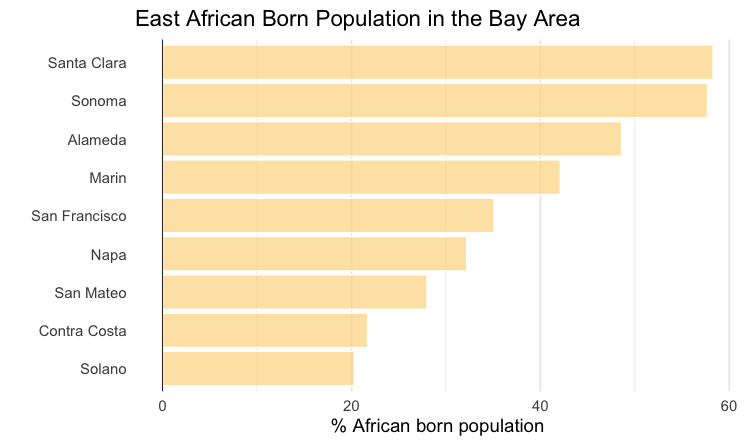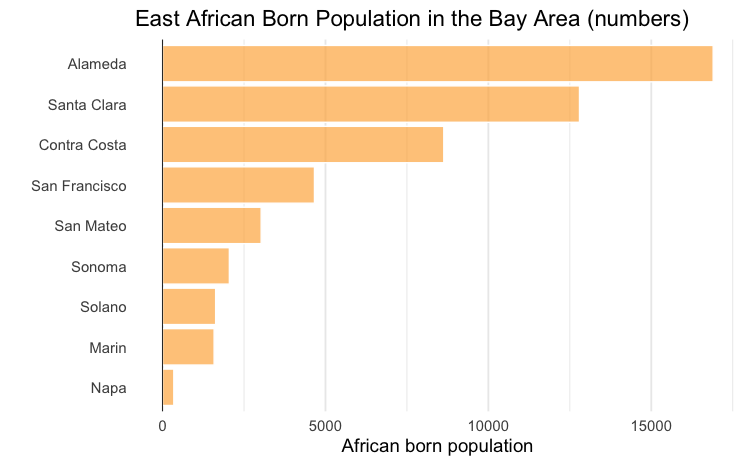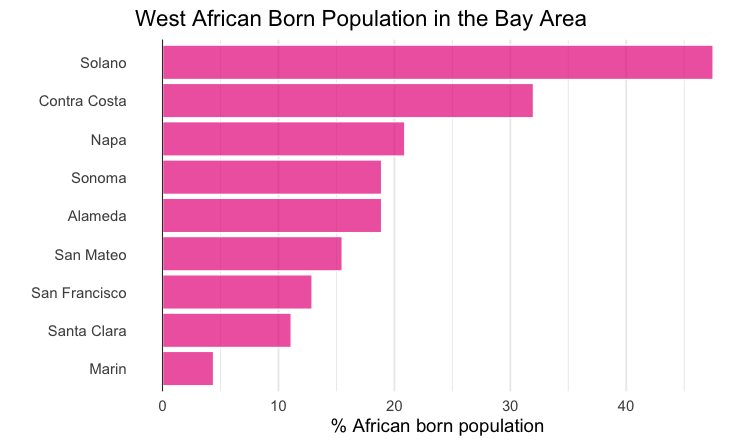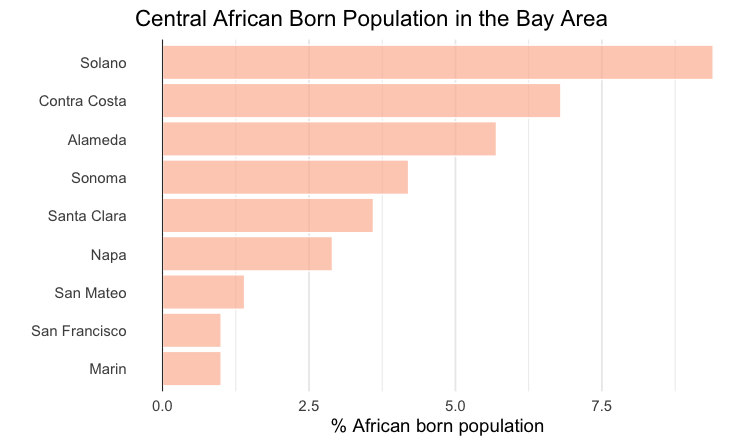The number of African immigrants in the Bay Area is growing. Here is what US Census data tells us about them.
By Kenneth Kipruto
California is increasingly becoming a preferred destination for immigrants from Africa. Data from the 2013-2017 Census Bureau’s American Community Survey (ACS) Five-Year Estimates shows that immigrants from Africa to the nine Bay Area counties numbered half of all immigrants to the area from Europe.
Up to 60 per cent of all Black immigrants to the Bay Area over the last decade are from the African continent, amid statistics showing that the population of native California African-American identifying people is shrinking.
Most immigrants from Africa blend into already existing Black communities in the Bay Area, especially those from their homelands. According to Priority Africa Network (PAN), a non-profit that seeks to build intergenerational bridges within the African diaspora, this demographic shift raises questions about contemporary definitions of Blackness.
“Racial appearances of Black immigrants’ make them seem to blend into existing Black/African American communities. Similar to their African-American counterparts, they must deal with incessant racial profiling and other forms of injustice based on skin color. But they also have distinct needs as immigrants that are going unaddressed,” PAN says in a report released this year.
This raises a false assumption is that as newcomers, African migrants are actively included by immigrant-serving organizations, PAN says.
Using the ACS data, this report takes a look at the growing numbers of immigrants from Africa in the Bay Area, where they are based and where they originated from.
According to the ACS data, people from Africa in the Bay Area constitute the third largest immigrant community after those from Europe and Asia.
During this period, Kenyan immigrants to the Bay Area numbered 1,404 compared to 1,309 from Italy and 2,547 from England, two European nations in which terms and conditions to getting a US Visa are more lenient than for most African countries.
Kenya was not even the leading country in East Africa, with Eritrea and Ethiopia sending in more, at 2,069 and 3,304 respectively. Granted, most immigrants from Africa to America and europe are asylum seekers, running away from wars and political persecutions from their home countries. But some countries like Kenya and Nigeria, with substantial number of people in the Bay Area’s nine counties, are by all measures peaceful and in good political standings.
This project explored the ACS data to understand how the numbers have been growing through the last ten years, which regions of Africa most immigrate from and where they are located in California in general, and the Bay Area in particular.
Several factors determine where immigrants from Africa choose to settle in, including jobs, schooling and community. Most immigrants, research has shown, will settle where there is already an established community from their home country. Here is a deeper look at the numbers of African immigrants in the Bay Area as a percentage of the foreign population as categorised by the US Census Bureau and the counties they reside in.
A higher percentage of East African born people in the Bay Area live in Santa Clara County, although there is a huge Ethipian and Eritrean presence in Alameda County, especially in the city of Oakland, most of who are asylum seekers running away from the war in the Horn of Africa.

When you run a comparative analysis with the numbers of East Africans in the Bay and not as perecentage of the foreign born population, Alameda County comes top, followed by Napa and San Mateo as shown in the chart above.

Thirty percent of immigrants from southern Africa in the Bay Area live in Marin, Napa and San Mateo. The Census Bureau actually lists South Africa and ‘Other South Africa’ under it’s classification of southern African born immmigrants in the United States.

There is a huge population of immigrants from Nigeria across the United States. In the Bay Area, most immigrants from western Africa, who are again mostly Nigerian and Ghanaian, live in Solano, Contra Costa and Napa counties.

The US Census Bureau classifies the region of central Africa as Middle Africa and includes countries like Cameroon, Democratic Republic of Congo, Rwanda and the Central African Republic. Immigrants from this region of the continent seem to prefer Solano, Contra Costa and Alameda counties in the Bay Area.

People from nothern Africa mostly regard their region as Middle East and North Africa (MENA). In the Bay Area, most of them reside in San Mateo, San Francisco and Contra Costa counties.